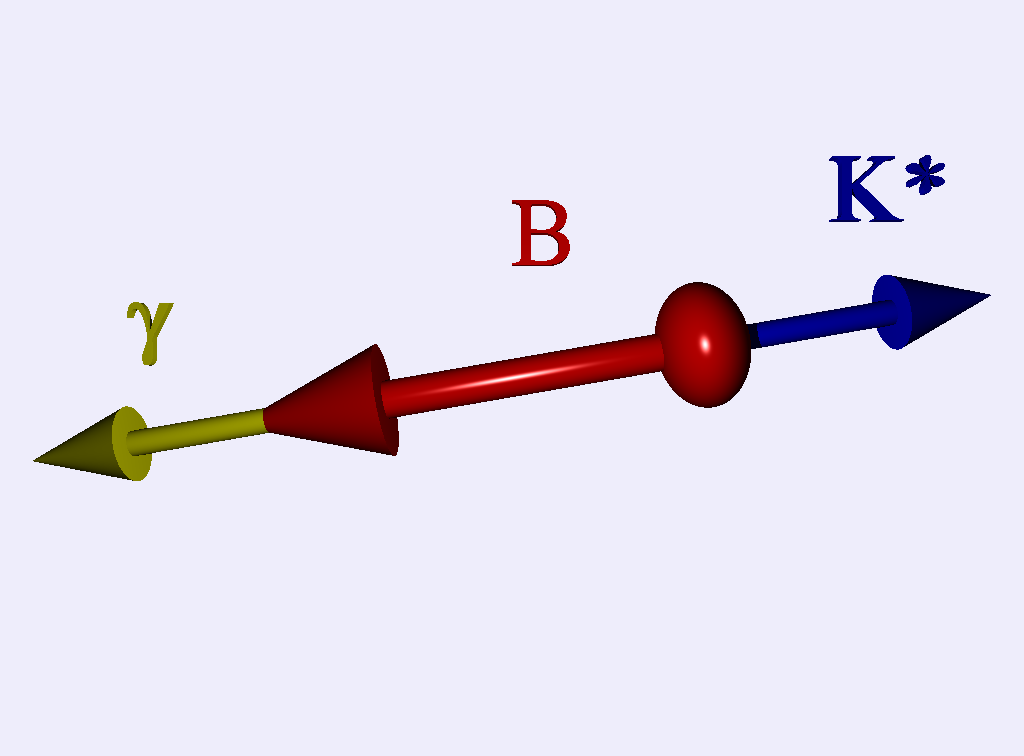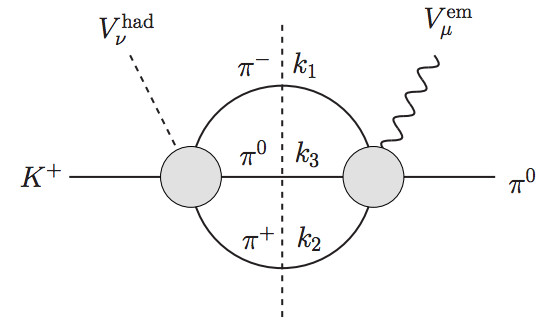| Home | Research | Software | CV | Publications | Talks | Funding and Awards | Teaching and Supervision | Collaborators |

|
Computational Particle Physics
Lattice QCD and automated perturbation theory[with Alistair Hart (Edinburgh), Christine Davies (Glasgow), Stefan Meinel, Matthew Wingate, Ron Horgan (Cambridge)] In my PhD in the Particle Physics Theory group at the Univeristy of Edinburgh I studied quantum chromodynamical (QCD) corrections to radiative B-meson decays. The interactions inside the meson are described by the strong force which can enly be calculated numerically in a framework known as Lattice QCD. This requires the discretisation of theory on a space-time lattice and the solution of the resulting equations with Monte Carlo methods on powerful parallel computers. However, on currently available lattices the Compton wavelength of the heavy b-quark is so small that it can not be resolved and the particle has to be treated in an effective theory. The parameters of the effective Lagrangian are calculated in a perturbative expansion, an requires the matching of the gluonic radiative correction at every order. I carried out this matching in a moving reference frame [Dougall et al., Lattice 2005 Conference] both for the Lagrangian and for operators which are relevant for the radiative decay of the B meson into a Kaon and a photon. In particular, this requires the automatic derivation of lattice Feynman rules and the evaluation of complicated lattice integrals as described in [Hart et al. (2009)]. For efficiency I used a parallel MPI implementation of the VEGAS Monte Carlo integrator. The results of this work [Müller et al. (2009)], [Horgan et al. (2009)], [Müller, Hart, Horgan (2011)] are important for comparing experimental measurements to theoretical predictions. In particular they constrain the contribution of new phenomena beyond the Standard Model of Particle Physics, which is one of the main purposes of the Large Hadron Collider at CERN. |

Kinematics of the rare B→K*γ decay in a moving reference frame. |
Locality of staggered quark actions
[with Alistair Hart (Edinburgh)]
During my one year exchange as an undergraduate student at the University of Edinburgh I worked on a project to study the locality of the square-rooted staggered quark operator on the lattice [Hart, Müller (2004)]. As this operator is now widely used in lattice QCD simulations, its properties are important for a wide range of numerical results.

Two loop diagram in ChPT |
Chiral Perturbation Theory[with Bastian Kubis, Ulf-G. Meissner (Bonn)] In my diploma thesis at the University of Bonn I studied T-odd correlations in radiative Kaon decays. Here the strong interactions are treated in an effective theory known as Chiral Perturbation Theory (ChPT), which requires the evaluation of complicated loop integrals at every order. Distinguishing strong interactions from New Physics beyond the Standard model is important for the interpretation of experimental results. I studied the leading order strong corrections, compared them to other effects such as radiative QED photon exchange and New Physics effects. In particulat my work lead to theoretical predictions of the relevant form factors, which can be compared to experimental measurements [Müller, Kubis, Meißner (2006)], [Kubis et al. (2007)]. |
© Eike Müller, University of Bath. Last updated: Mon 28 Dec 2020 11:51:56h